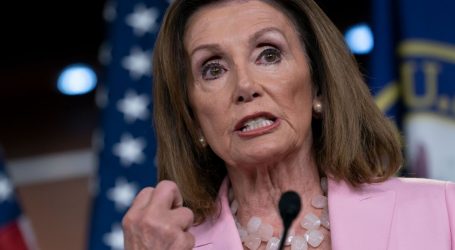California Republicans Ponder Their Darkest Hour
Looking for news you can trust?Subscribe to our free newsletters.
A full 11 days after the polls closed in California, the Associated Press has called the 39th House district for Democrat Gil Cisneros, who snatched a narrow victory from his Republican rival, Young Kim. The night before, news broke that Katie Porter, an Elizabeth Warren acolyte, had unseated two-term Republican Rep. Mimi Walters, who ran as an unabashed supporter of President Trump and his most controversial policies.
That the state’s last two outstanding seats fell to Democrats means not a single Republican will be representing any portion of historically conservative Orange County, California. Call them whatever you want—a blue wave, squall, tsunami, blizzard, hurricane, comeuppance, etc, etc—the results represent a major shift: Until November 2016, the OC hadn’t voted in favor of a Democrat for president since 1936. Now there’s no red in sight.
See?
Congressional districts in Orange County, Calif. in 2016 and in 2018 pic.twitter.com/TWRQ1pPzS4
— Morning Joe (@Morning_Joe) November 16, 2018
In January 2017, less than two weeks after President Donald Trump took office, the Democratic Congressional Campaign Committee released a list of 61 Republican-held House districts it planned to target in the 2018 midterm elections. Of those, seven were California districts with Republican representatives where Hillary Clinton had beat Trump in the 2016 election. This list—later expanded to 10 districts—was seen as critical to Democratic hopes of flipping the House. “It’s a pretty aggressive battleground map,” Drew Godinich, a DCCC spokesman, told me earlier this year. “It’s a recognition of the importance of these California races to taking back the majority.” If there was going to be a blue wave, it would have to roll through California.
On election night, that proved not to be the case. The Democrats had clearly taken control of the House before the polls even closed in California. Only now do we see the scope of the Democrats’ efforts, turning six of the original seven targets blue, and making other major gains throughout the state—sometimes even when they lost.
“The California Republican Party isn’t salvageable at this time. The Grand Old Party is dead.”“The California Republican Party isn’t salvageable at this time. The Grand Old Party is dead—partly because it has failed to separate itself from today’s toxic, national brand of Republican politics,” Kristin Olsen, a Stanislaus County supervisor and former Republican leader in the state Assembly, wrote in CALmatters on Tuesday, before it was entirely clear just how poorly the Republicans would perform. “Republican principles used to be about helping other people…We welcomed people from all over the world who sought to live the American Dream and contribute to the economy and society,” she wrote. “Unfortunately, tragically, that is not the Republican Party promoted by President Donald Trump and his brand of national politics today. We have lost our way.”
As the Republican brand has taken a hit, the party has also had to contend with major demographic shifts in districts they used to win effortlessly. Exhibit A is California’s 49th district, held by Rep. Darrell Issa (R-Calif.), who is stepping down after almost two decades and will be replaced by Democratic victor Mike Levin. The Republican loss of this once-red district was “almost a demographical inevitability,” says Kurt Bardella, a former Issa staffer who’s now a Democrat, the result of changes “that have been happening for a long time now.”
Bardella points out that this trend will continue to plague his former party: “Unless the Republican Party re-calibrates its message and broadens its appeal, they will end up going the way that most of the Republican Party in California has gone—which has really become almost an endangered species.”
Thomas Holyoke, a political science professor at Fresno State University, highlights the race in the 48th district pitting Democrat Harley Rouda against Rep. Dana Rohrabacher, who has represented his Southern California district for nearly three decades. “Rohrabacher’s seat should have been pretty secure,” he says. “California is increasingly becoming a Democrat-dominated state.”
Even in the districts they lost, Democrats made gains in other ways. As my colleague Dave Gilson noted earlier this week, “Democrats in the four races where Republicans retained their seats improved their party’s vote share by an average of 8.9 points.” In his race against Republican Rep. Duncan Hunter (who is under indictment for campaign spending violations), Ammar Campa-Najjar brought in 10 points more than the Democrat who ran in 2016. In the 22nd district, Andrew Janz did 12 points better than his predecessor in his attempt to unseat Republican Rep. Devin Nunes.
“There’s no denying that at a time when the economy is performing, it says a lot that the Republicans couldn’t hold the House,” Bardella says. “With people getting their taxes cut, keeping unemployment below 4 percent, having good GDP growth—traditional hallmark Republican core issues—under the best of circumstances, they couldn’t win. That should be troubling to them.”
The way Olsen, who has been involved with Republican politics her entire adult life, sees it: “If the Republican Party can’t evolve, it may be time for a third party, one that will appeal to disenfranchised voters in the Republican and Democratic parties who long for better representation and a better California for all.”




